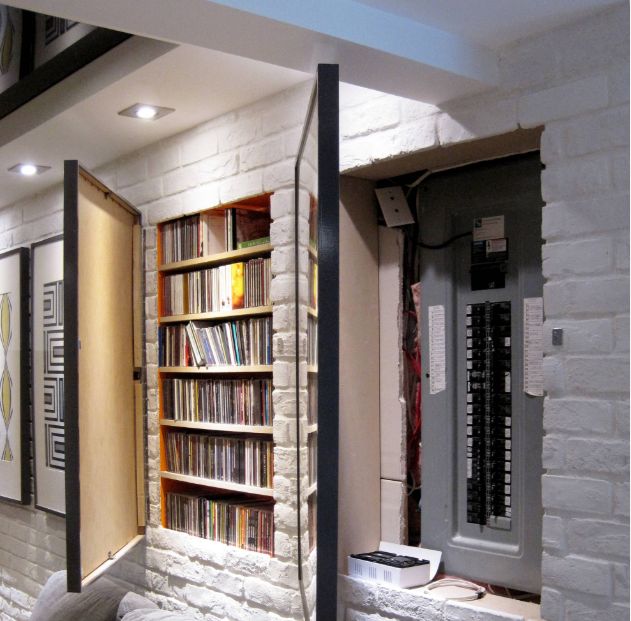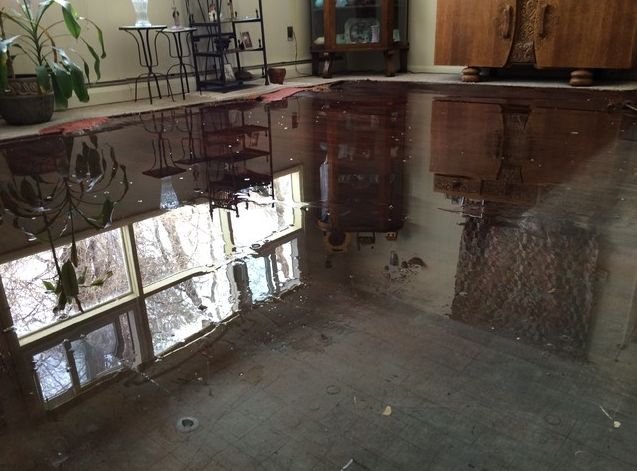Don’t Stress Over Flood Damage: Follow These Steps to Restore Your House
A flood can happen to any home or residence – -you don’t have to live near a body of water. Whether it’s a gusher from broken plumbing or storm deluge that sends water rushing into your house, the aftermath of a flood can be messy, smelly, costly and even dangerous. It’s important to be prepared and know what to do when the water recedes. In fact, some of the most important tasks don’t have to do with cleanup! We’ve pulled together a list of everything you need to take care of if your home is affected by floodwaters.
Can You Stop the Flow of Water?
Anything you can do to stop or slow down the entry of water into your residence is a good step to take. If the water is coming from a pipe or plumbing fixture, can you turn off the water where it enters your apartment or house? This can often keep damage from being serious if caught early enough. If the water is coming from outdoors, can you sandbag the doors or other entry points? Anything that blocks at least some of the water from coming in can help.

Can You Turn Off the Electricity?
Before the water starts — if possible – turn off your electricity and the gas to keep family, pets or even rescuers safe from dangerous currents or other hazards. If there’s already water present, experts say you should still turn off the power only if you can do so without stepping into the water. If necessary, contact an electrician to turn it off for you.

Start Making Phone Calls
Once you’ve made sure that everyone in your household is safe and accounted for, a few key people should be your first phone calls a when a flood happens: Your landlord and your insurance agent. If your home is a rental property, the landlord should be hour fist phone call, whether the water is coming from plumbing or bad weather. Many apartment complexes have their own maintenance crews that will come out and deal with the emergency. If you own your home, then the insurance agent is your top priority. Often, they can start a claim over the phone to be completed when the damage is fully assessed. The company may opt to send someone out right away to examine the damage.

Take Pictures
Before you re-enter the house, be sure that it is safe. Check the structure for any dangers such as a sagging roof or ceiling, weak stairs, unstable floor, etc. Once you’re sure that it’s safe to re-enter the house, grab that smartphone and start snapping pictures and videos of the water in your home and all personal belongings and parts of the house that are damaged by water. These will be invaluable when it comes time to work with your insurance company to recoup the costs of cleanup and repairs. Typically, unless you have flood insurance, your homeowner’s policy won’t cover damage from surface water that arises from a story. Most policies usually cover losses related to by wind or broken water pipes. Of course, every policy differs, so don’t assume anything and be sure to work with your insurance agent.
Documenting everything is critical, but be sure to be safe. If there’s a chance of mold or sewage, make sure that you wear protective gear and a mask to protect your health. Also, don’t touch anything until you make sure that it’s not contaminated with anything toxic. You’ll also want to check all your appliances, pipes and any other systems in the house, such as those for security, internet, etc.

Begin the Clean Up
There is no sugarcoating the cleanup job after a flood. It is going to be difficult and overwhelming. Depending on the level of damage and how much water remains in your house, you might need to hire a professional, especially if sewage or any toxic materials were in the floodwaters. Whether you hire someone or decide to DIY the cleanup job, there are important steps that must be taken. Remember that it’s not just about making your house attractive again. The home needs to be clean and safe for your family to return there.

Empty it Out
If there’s standing water in your house, you need to get it out as soon as possible. Use a sump pump (you can get one at the hardware store) to remove the water relatively easily. Once the water is out, salvage anything valuable or important to you and hose it down or wash it. Save photo albums and important papers because there are many new techniques that might be able to rescue these valuable items. Pull out any carpeting and padding that was wet because that cannot be salvaged. Then dry the house out. Open the windows, use fans and dehumidifiers — anything that speeds drying because time is your enemy when parts of your home are drenched from a flood. A wet environment is very friendly to mold growth, something you really want to avoid. Leaving closet and cabinet doors open to thoroughly dry out those areas is a good idea too.

Make a List
Next, you’ll want to start a list of all the damage, both to the structure and to your belongings. Matching this up with images as documentation is an excellent tactic.
Hire Some Pros
Few of us have the skills, knowledge and time to efficiently repair and rebuild after flood damage. It might be quite likely that you have to have the work done before you and your family can move back into the house, especially if the damage is extensive. You’ll definitely need a contractor, preferably one that is experienced with flood restoration. Do all the usual due diligence when choosing a service provider and opt for a local contractor with plenty of references. It’s not uncommon for less than honest companies to enter a region that has been affected by floods to make money by cutting corners. You might also need an electrical contractor, which the general contractor might refer. Having a professional electrician check out your system before the power is turned back on is a critical safety precaution. Lastly, your furnace, air conditioner or water heater might have been damaged, especially if the flood was in the basement where these items are typically located. Calling your HVAC service person to do a check is also a standard step in flood restoration.

Take Out the Flooring
Flooring of all kinds — hardwood, tile, carpet, vinyl – – has to come out after a flood. That includes the subfloor, which is usually wood or oriented strand board (OSB). You might think that tile is waterproof, so it would be ok to leave in place, but that is not the case. The subfloor will have absorbed water and will never properly dry out with the tile on top, causing a serious mold problem.

Remove Damaged or Damp wallboards
These days, most modern homes have walls of studs and drywall, which absorbs water and swells. This is a wonderful breeding ground for mold, so you or your contractor should remove the wet wallboards so that the wooden studs can dry out properly before the walls are replaced. Associa.com recommends that you take out the wall at least a foot above the waterline and all the way to the floor to ensure that no mold will grow. Sorry to say, any insulation in the walls will also have to be thrown away and replaced. More importantly, depending on the amount of water that came into your home, it could take a number of weeks for the wall studs to completely dry out.

Do Everything to Prevent Mold
Mold is one of the biggest problems a home can have after a flood, especially if it is toxic or black mold. These types of mold have been shown to have negative effects so it’s critical to fully dry out the flooded area and clean problem areas with bleach or another strong cleaner. If mold is a problem, tips from the Federal Emergency Management Agency can help you deal with the issue. If the whole basement flooded, it’s usually safest to strip the entire area down to the studs, fully dry out, and then replace everything properly.
Get an Air Test
After all the work and expense of restoring your home after a flood, this is such a minor expense that can give you peace of mind that your family’s health is safe. Don’t skip it.
The post Don’t Stress Over Flood Damage: Follow These Steps to Restore Your House appeared first on Home Decorating Trends – Homedit.





